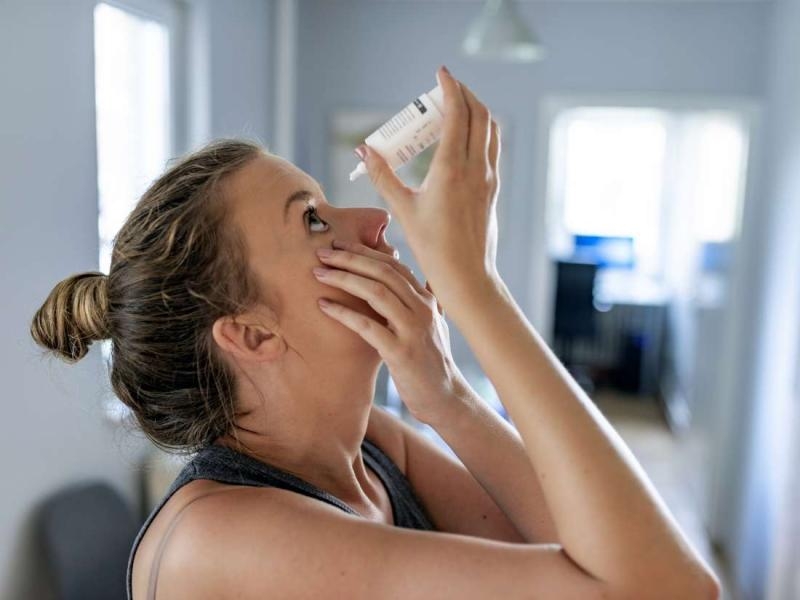Exploring the Latest Treatment Innovations for Dry Eye in 2025
Dry eye disease (DED) affects millions globally—an uncomfortable, vision‑disrupting issue that compels patients to constantly seek relief. Thankfully, ophthalmologists, eye doctors, and eye surgeons now have cutting‑edge therapies at their disposal, combining medical, surgical, and technological approaches. In this comprehensive guide, we explore the most promising innovations—including electroceutical wearables by Nu‑Eyne, new prescription drops, in‑office procedures, and regenerative approaches.
Understanding Dry Eye
Dry eye syndrome—clinically known as keratoconjunctivitis sicca—is a multifactorial condition involving tear film instability, inflammation, and ocular surface damage. An estimated 10–20 % of adults in the U.S. experience clinically significant symptoms, with higher rates in older populations. Ophthalmologists and eye surgeons play a crucial role in accurate diagnosis using tools like meibography, Schirmer test, and tear film break‑up time.
1. Electroceutical Wearables: Nu‑Eyne’s CELLENA Goggles
One of the most exciting breakthroughs is from Nu‑Eyne, a South Korea‑based startup developing bioelectric wearables. Their flagship CELLENA device looks like sleek goggles that apply micro‑electric currents and light stimulation around the eyes to regenerate ocular tissues, improve nerve function, and relieve dryness.
Nu‑Eyne’s approach uses “electroceuticals”—a nascent field combining biology, electronics, and therapy. The company has reported success in early-stage trials targeting dry eye, with ongoing pivotal studies evaluating post‑LASEK efficacy.
For patients tired of drops and plugs, and eye doctors looking for non‑invasive alternatives, CELLENA represents the future of ophthalmic care. Eye surgeons may see applications beyond dry eye—including nerve regeneration after refractive surgery or neuropathic ocular pain.
2. Next‑Generation Prescription Drops
a) Perfluorohexyloctane (Miebo, Evotears, Novatears)
Approved in the U.S. in May 2023 under the brand name Miebo, perfluorohexyloctane is a first‑in‑class semifluorinated alkane that stabilizes the tear lipid layer and fights evaporation—especially useful for meibomian gland dysfunction (MGD). Sold OTC as Evotears or Novatears internationally, it's recognized for enhancing tear stability with minimal side effects.
b) Vevye
Launched in January 2024, Vevye is an anti‑inflammatory steroid drop tailored for severe, refractory dry eye.
c) Pipeline Agents: Xiidra, Restasis, Tyrvaya
Other recent additions include:
-
Tyrvaya (varenicline nasal spray): FDA‑approved 2021, boosts tear production via nerve stimulation.
-
Xiidra® and Restasis®: Block inflammatory pathways (lymphocyte function, TNF‑α) and remain cornerstone prescriptions.
3. In‑Office and Device‑Based Therapies
a) Intense Pulsed Light (IPL) & Radiofrequency (RF)
Originally from dermatology, IPL is FDA‑approved for MGD‑related dry eye. It reduces eyelid inflammation and unblocks meibomian glands—many patients experience skin rejuvenation as a bonus. A standard course—4 sessions over months—is often followed by annual maintenance.
RF therapy, sometimes combined with IPL (e.g., InMode’s Envision), offers gland stimulation through heat, ideal for a broader skin type range .
b) Thermal Pulsation Devices: LipiFlow & TearCare
TearScience’s LipiFlow applies heat + pressure to unblock glands . Another device, TearCare, uses targeted eyelid heat with greater precision.
c) BlephEx
BlephEx is a handheld exfoliation system used by eye doctors to remove biofilm and debris from eyelid margins, addressing blepharitis— a common dry eye contributor. Studies report 60‑66 % improvements in tear film break‑up time after routine use .
d) Canalicular Gel: Lacrifill
Lacrifill, a crosslinked hyaluronic acid canalicular gel, offers a softer, less irritating alternative to traditional plugs. Clinical trials show sustained Schirmer test and OSDI score improvements over six months .
4. Regenerative & Autologous Therapies
a) Platelet‑Rich Plasma (PRP) Drops
PRP eye drops, originating in regenerative medicine, leverage a patient’s own growth factors to heal ocular surfaces—offering another option beyond standard lubricants .
b) Autologous Serum Drops
These drops mirror natural tear composition, delivering nutritive serum to the ocular surface. Evidence supports short‑term efficacy, though data for long‑term outcomes is mixed.
c) Emerging Avenues: Stem Cells, Gene Therapy, Biomaterials
Research is progressing toward next‑gen solutions, such as:
-
Stem cell transplants for lacrimal gland/secretion recovery
-
Gene therapy to address underlying tear‑film dysfunction
-
3D‑printed corneal scaffolds for severe ocular surface disease.
5. AI‑Enhanced Diagnostics
Sophisticated imaging and machine learning now assist eye surgeons in early detection and treatment planning. For example, AI models automate meibography segmentation, enabling objective assessment of gland structure and tear film status. This data-driven insight improves outcomes by allowing personalized interventions.
A customized care plan might look like this:
-
Assessment via ophthalmologist using meibography and OSDI scoring.
-
Start with in‑office treatments:
-
IPL or RF for MGD relief
-
Thermal pulsation (LipiFlow/TearCare)
-
Eyelid cleansing (BlephEx)
-
Consider Lacrifill for tear retention
-
-
Add prescription drops:
-
Begin with artificial tears → add Xiidra/Restasis
-
Use Miebo for evaporative dry eye
-
Prescribe Vevye for refractory inflammation
-
-
Introduce advanced modalities:
-
Electroceuticals (CELLENA) for nerve/nerve‑gland recovery
-
PRP or autologous serum for surface healing
-
-
AI‑driven monitoring supports treatment adjustment.
-
Lifestyle and ergonomics: Blink reminders, humidifiers, screen breaks, omega‑3s.
What’s Next in Dry Eye Care?
-
Commercial approval and wider distribution of Nu‑Eyne’s CELLENA from Seoul.
-
Validation of next‑gen topical drugs and regenerative therapies.
-
Mainstream AI diagnostics facilitating personalized treatment pathways.
-
Advanced combination therapies (e.g., IPL + RF or electroceutical + serum).
Conclusion
The dry eye landscape in 2025 is vibrant and forward-looking. Merging the strengths of technology (electroceuticals, AI), medical intervention (drops, PRP, canalicular gels), and procedural precision (IPL, thermal pulsation), ophthalmologists and eye surgeons can now offer personalized, effective treatment.
Book a consultation with leading dry eye specialist Mr Samer Hamada





